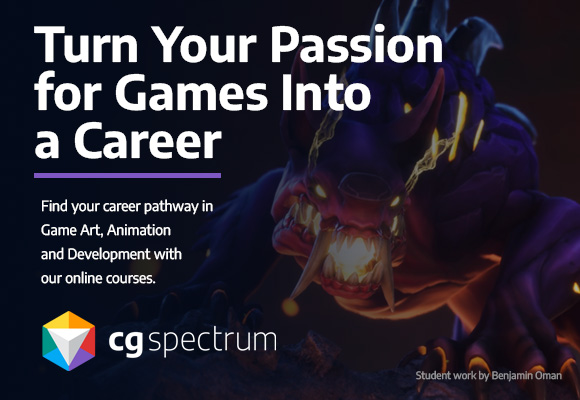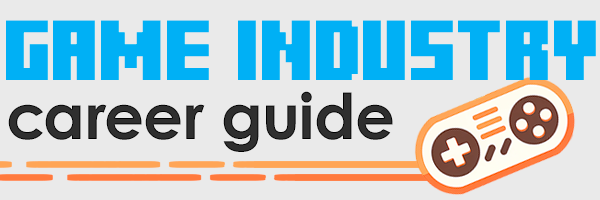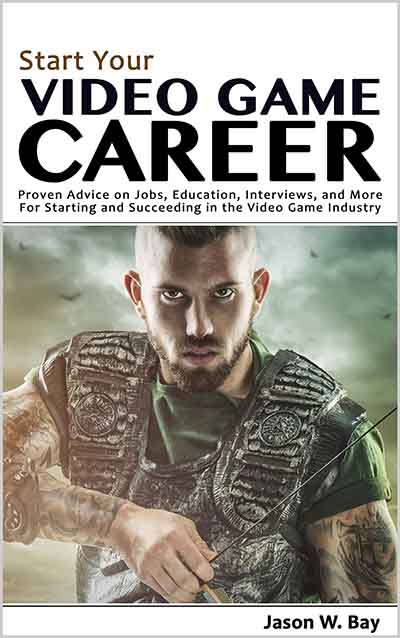Game Environment Art Portfolio Example
 “Draw every day.” Those three words of advice appear simple on the surface, but they’re the foundation of a long and successful art career for video game concept artist Caleb Parrish.
“Draw every day.” Those three words of advice appear simple on the surface, but they’re the foundation of a long and successful art career for video game concept artist Caleb Parrish.
Parrish has been creating gorgeous interactive game environments for nearly twenty years. He’s worked on art teams for over a dozen video games, including blockbuster franchises like Spiderman, Assassin’s Creed, and Spore. He’s also been a consultant and technical resource for game teams, to maximize fidelity and performance on resource-limited devices like mobile phones and handheld consoles.

Environment Art Portfolio Example
 Environment Art Portfolio Example
Environment Art Portfolio ExampleArtist: Caleb Parrish
Job: Video Game Environment Artist
Portfolio: http://www.artofcalebparrish.com
Avoid visual distractions
When curating his online portfolio, Parrish chose a clean, minimalist layout. He uses very little text and few interface elements, to put his art front and center. “Don’t distract from the work,” he says. “Make your presentation about the images, not the interface.”
He also made it easy for visitors to view a large version of each piece, simply by tapping or clicking to open a lightbox. “The fewer clicks it takes before your gallery is presented, the better.”

Show the work you want to do
Although he’s painted hundreds of concept pieces, his online portfolio displays just twelve. Why not more? Because employers are hungry to see an artist’s best work — and nothing else. “Only show professional-level work if you expect to be paid to do a professional job,” he says. “One bad-looking image will detract from the whole, and sometimes that’s all it takes to remove you from contention.” In other words: quality over quantity.
Parrish explores art in many styles and mediums, but you won’t see much variety in his online portfolio. That’s by design. He recommends that you only include portfolio pieces that represent the work you want to do professionally. He says, “Make sure your images are relevant to the job you are applying for, and don’t be afraid to shuffle them to fit.”

Be consistent and relentless
Although he’s largely credited as an Environment Artist, Parrish is also a talented digital painter. And although computers can be a powerful tool for artists, the constant parade of new art software can also be a powerful distraction. That’s why Parrish cautions that it’s important to focus more on the art than on the latest-and-greatest software tools. “Your art skills will be much more valuable in the long run than your software skills, so don’t skimp.”
And perhaps the best way to hone your art skills is to draw every day, creating new works consistently and relentlessly. “Be really, really prolific.”
Make it easy to find you
Many artists place their email address on a separate résumé or “About Me” page, but that makes it harder for visitors to find. Parrish recommends you do the opposite. “Make it easy to find you. Your contact info should be easily accessible from any point on your webpage.” It’s easy for employers or collaborators to email Parrish or connect on LinkedIn, because his contact info is front-and-center on his portfolio’s home page.
Drawing every day is important, but it’s only the first step in your art career. Build an online portfolio that focuses on the art, only shows your best work, and makes it easy for employers to contact you. You’ll be well on your way to landing a job as a professional artist.
All images via Caleb Parrish, artofcalebparrish.com.
Read my new book!
Making games for a living is an incredibly rewarding career, but it’s hard to break in unless you have insider knowledge. This book levels the playing field.


I really enjoyed reading this article I’ve been in school slay VCAD for two years and this one I’ve read because I finally decided what I want to do as an entry level job into game development it environment artist thank you for the knowledge
Glad this was helpful, Nico. I wish you the best with your career as an environment artist!